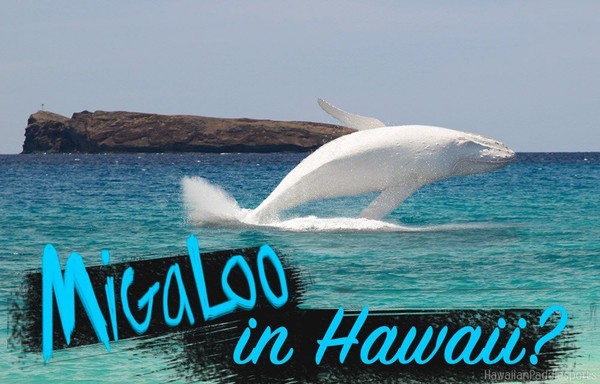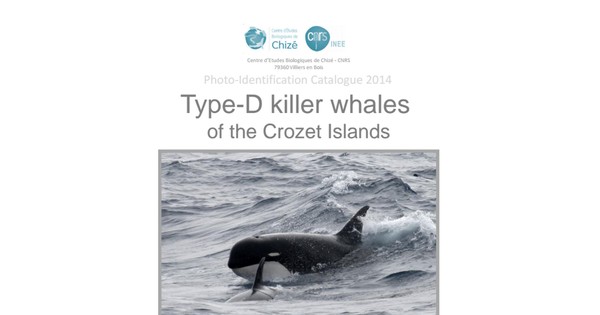The staff from WDC North America went whale watching Saturday, April 18, and was fortunate to catch this association of humpback whales feeding.

The doll maker has decided to end production of all SeaWorld-branded merchandise, including SeaWorld Trainer Barbies.
“We’re not making the dolls anymore,” a Mattel spokesman said.
The toy giant said it is ceasing production partially over concerns from environmentalists, including the People for the Ethical Treatment of Animals, who have alleged that SeaWorld orcas are being mistreated.
Mattel launched the Trainer Barbie line in 2012.
SeaWorld in August 2014 dropped its appeal of a Labor Department ruling that forced trainers to keep their distance from orcas during shows.
The government had investigated SeaWorld after a trainer drowned while working with an orca.
It's been a year since the International Court of Justice declared Japan's Antarctic whaling illegal.
That historic decision meant that for the first Antarctic summer in a century, no whales were hunted in the entire Southern Hemisphere.
But that victory could be short-lived if we don't act now. Japan has devised a new program of so-called "scientific whaling," and it intends to start hunting whales in the Antarctic Ocean at the end of the year.
There's nothing new about Japan's plan. It's still a hunt for whales for products nobody wants and for research nobody respects. Yet Japan wants to kill another 4,000 whales over the next 12 years in an even larger Antarctic killing zone.
Take action now. Tell President Obama to do more to prevent the return of whaling in the Antarctic Ocean.
America's leadership is crucial in the battle against whaling, and that leadership is needed now more than ever. We need to join Australia and other like-minded countries by keeping pressure on Japan ahead of its return to the Antarctic.
Scientists have been instrumental in discrediting the pretense of "scientific whaling." But if Japan is to feel the heat on whaling, these scientists need our unwavering support.
Help protect whales. Japanese Prime Minister Shinzo Abe is coming to the United States next week to meet with President Obama. Ask President Obama to tell him that Japan is damaging its international reputation by continuing Antarctic whaling despite the decision of the world court.
Here in America we are a whale-loving people, and we expect our government to reflect that. Help make sure they do.
Agency proposes to protect critical feeding, calving grounds for right whales, leaves out migration route
The good news for right whales? Square mileage of right whale critical habitat is increasing. The bad news? It’s not necessarily increasing in all the right places. In February, the National Marine Fisheries Service (NMFS) proposed to increase critical habitat for the North Atlantic right whale from a meager 4,000 square miles to 39,655 square miles. But where those miles are located is important.How We Got Here
In 1994, NMFS designated just 4,000 square miles of critical habitat for the whale. It was a number that scientists widely acknowledged wasn’t enough. So in 2009, Defenders petitioned the agency to increase it to 50,000 square miles, encompassing the whales’ feeding areas, calving grounds, and migratory route – in short, all the most important and vulnerable habitat that scientists and experts agreed needed protection.
What followed was…nothing. Even though NMFS was legally bound to respond to the petition, the agency took no action at all, and the whale’s habitat remained at risk. Defenders sued NMFS for dragging its feet in 2010, and after they failed to meet their own deadline for action, again in 2014. Finally, this past January, we reached a settlement, and NMFS agreed to publish a proposed rule by February 2015 and a final rule by February 2016.
The New Proposal
The newly proposed designation of 39,655 square miles is a good start. It includes the whale’s northeastern feeding areas: 28,252 square miles in the Gulf of Maine and Georges Bank region, where copepods, (tiny planktonic crustaceans, the preferred prey of right whales) are abundant. This is a good thing! Because right whales are several billion times larger than their prey, they need extremely high quantities. And to conserve their energy efficiently, they need to eat the most copepods in the least amount of time.
The proposal also includes the only known calving area of the North Atlantic right whale: 11,403 square miles from the southern edge of North Carolina’s coast to the northern stretch of Florida’s coast. The Southeast coast’s calm sea surface conditions, temperatures, and depths make it the ideal calving grounds for right whales. These conditions help the adult whales save energy while also keeping the calves safe until they are big and strong enough to handle rougher ocean conditions.
That the proposal protects these two vital pieces of habitat makes it a great start. The one problem: It completely ignores all the space in between. Under this proposal, the whales’ mid-Atlantic migratory route, which they navigate twice each year, would be unprotected. This trek is essential to right whale survival and recovery. Pregnant females and mothers with young calves are the whales that make this journey most. Both groups are extremely important to the overall population of only 450-500 whales.
When migrating, right whales must navigate a tricky obstacle course. Fishing gear entanglement and ship strikes by large commercial vessels are both serious risks. But right whales’ habitat is also facing emerging threats. Seismic testing for offshore oil and gas development would fill this area of the ocean with huge blasts of sound. Large aquaculture facilities would pollute the water and add even more risk of being entangled in nets. Critical habitat requires federal agencies to make sure human activities requiring federal permits (like offshore energy development and aquaculture facilities) don’t damage or destroy the habitat that whales need to survive. This is why the mid-Atlantic migratory route absolutely needs the special management and greater protections that critical habitat designation would provide.
NMFS argued that the migration route is largely unknown because migrating whales surface less frequently and cover large distances each day, making the whales harder to track and the route broad and variable. But just because the agency cannot pinpoint the precise characteristics that define suitable migratory habitat (like it can for feeding and calving areas) doesn’t make it any less essential to the right whale’s survival. While the whales’ migratory route lacks specific characteristics like prey abundance or water temperature, we do know they hug the coast, staying within about 35 miles from the shore, and that’s the corridor we propose needs protection.
For the species to have a chance at recovering from the brink of extinction, their migration route must be protected. We’re continuing to talk to the agency to suggest ways to improve their proposal and make the critical habitat designation the most effective for right whales. There are several more steps before the decision is final, so stay tuned!
This part of the post The Missing Link appeared first on Defenders of Wildlife Blog.














